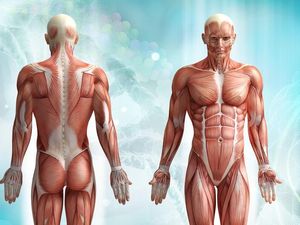7 myths about the human body that are often mistaken as facts
Matt Brown, former scientific editor and writer, debunks some of the most common misconceptions about our bodies.

We still have a lot to learn when it comes to understanding how our bodies work, but what if we told you some of the popular so-called facts we swear by about the human body are simply not true?
Matt Brown, a writer and a former editor of scientific manuscripts, debunks some of the most common misconceptions about our bodies in his book Everything You Know About The Human Body is Wrong.
1. We only use 10% of our brains

How the vast collection of cells within your skull somehow club together to achieve consciousness, emotion, rational thought and self-awareness can feel tantamount to magic.
This is probably why the factoid that we only use 10% of our brains has such traction. It’s a silly fact, though.
It seems clear from scans that all regions of the brain are in use at some point during the day.
It’s currently impossible to monitor every single brain cell (after all, there are billions of them), so we can’t know exactly how many are active at any given time.
By the same token, there is no way to show that exactly just 10% are active, either.
Given that the myth dates back to at least the early-20th century — a time without any form of proper brain scan — the number is clearly plucked from thin air, with no basis in measurements whatsoever.
2. A flatlining heart can be restarted with a defibrillator

It contradicts almost every medical drama you’ve seen, but a flatlining heart cannot be restarted with an electric charge from a defibrillator.
When somebody flatlines, that means there is no electrical activity in the heart.
Applying an electric shock can’t help. It’s like trying to jump-start a car that doesn’t have fuel.
Electric shocks only work if the heart has some electrical activity — a “shockable rhythm”.
The most common scenario is when the heart stops its familiar “lub-dub” and goes into a perilous quiver.
Shocking a heart with a defibrillator may reset this.
3. The appendix has no known function

The poor appendix has a reputation as a useless intestinal tube that goes nowhere. Or so people thought.
The appendix, it now seems, is a reservoir for helpful bacteria.
Microbes that help us fight disease are stored there, ready to be deployed if an illness wipes out their brethren in the wider gut – a role first demonstrated in 2011.
During our early years, the appendix also helps to form white blood cells and certain types of antibodies to fight infections.
The appendix can also be used as a spare part; surgeons have adapted its folds to make replacement urine ducts.
It’s worth hanging on to.
4. Carrots improve your night vision

“Eat your carrots. They’ll help you see in the dark.” It’s a claim many parents will have deployed to get their children munching veg.
Carrots do contain plenty of vitamin A, which helps maintain healthy night vision.
They won’t improve your eyesight beyond its natural limit, though.
The connection supposedly originated during the Second World War. British pilots had been unexpectedly successful at intercepting German planes.
The RAF said its pilots simply had better night vision, thanks to carrots.
The real reason was a secretive radar technology. This story is, itself, an urban myth.
5. Men with big feet have larger private parts

The idea that a man with large feet will also possess a substantial manhood is a common story.
But London hospital urologists have actually done the science and discovered that the theory doesn’t stand up.
In a study published in 2002 in the journal BJU International, they measured the stretched penile length of 104 men and compared it with their shoe size. They found no correlation.
What they discovered was that the average stretched penile length is 13cm (5 in), while the average male UK shoe size is 9.
6. Sugar makes children hyperactive

Contrary to received wisdom, there is no link between the amount of sugar a child eats and their level of excitement.
While there are many good reasons for not overloading kids with sugar, avoiding hyperactivity is not one.
At least a dozen careful trials have examined this.
In no study did the children on sugar-free diets behave differently to their sweetened fellows.
However, in 1994, a study by the University of Kentucky found that parents who thought their children had consumed sugary drinks (even when they hadn’t) tended to rate them as more hyperactive.
It’s a self-fulfilling prophecy.
7. You’ll catch a cold if you go out in the rain

Call it Jane Austen syndrome or the Dickensian flu – the tragic lover caught in a rain shower is a familiar cliche of the classic novel.
Soaked to the skin, they will either be bed-ridden for the next 12 chapters, or die from the chill.
It might be a melodramatic way of moving the plot forward, but the idea of a lengthy illness caused by a drenching is exaggerated.
Colds and flus are viral infections. You need to be exposed to someone or something with the virus before you will catch it yourself.
Raindrops do not carry the virus. Nor do chilly winds.
You cannot catch the flu by being wet or being cold, or going outside with wet hair, or running through a rainstorm following an awkward tryst, although cold temperature can hasten the onset of illness if you already harbour the virus.
Adapted from Everything You Know About The Human Body is Wrong by Matt Brown, published by Batsford.





